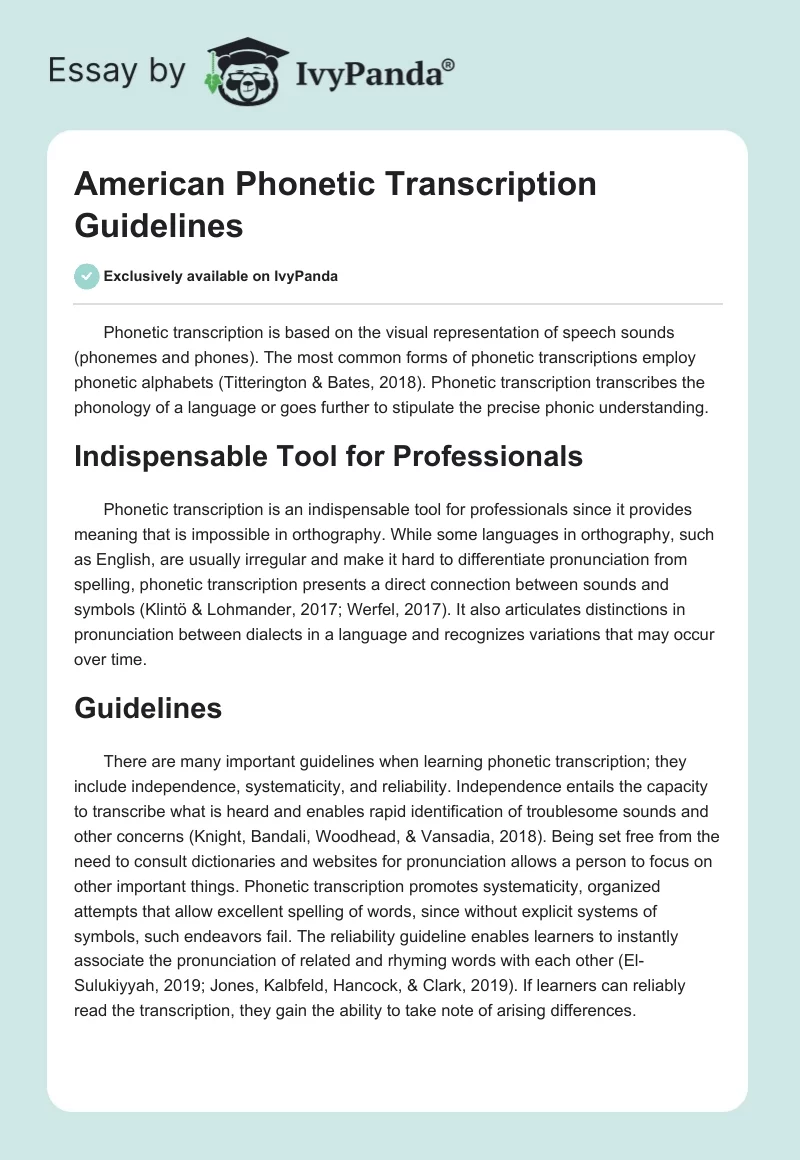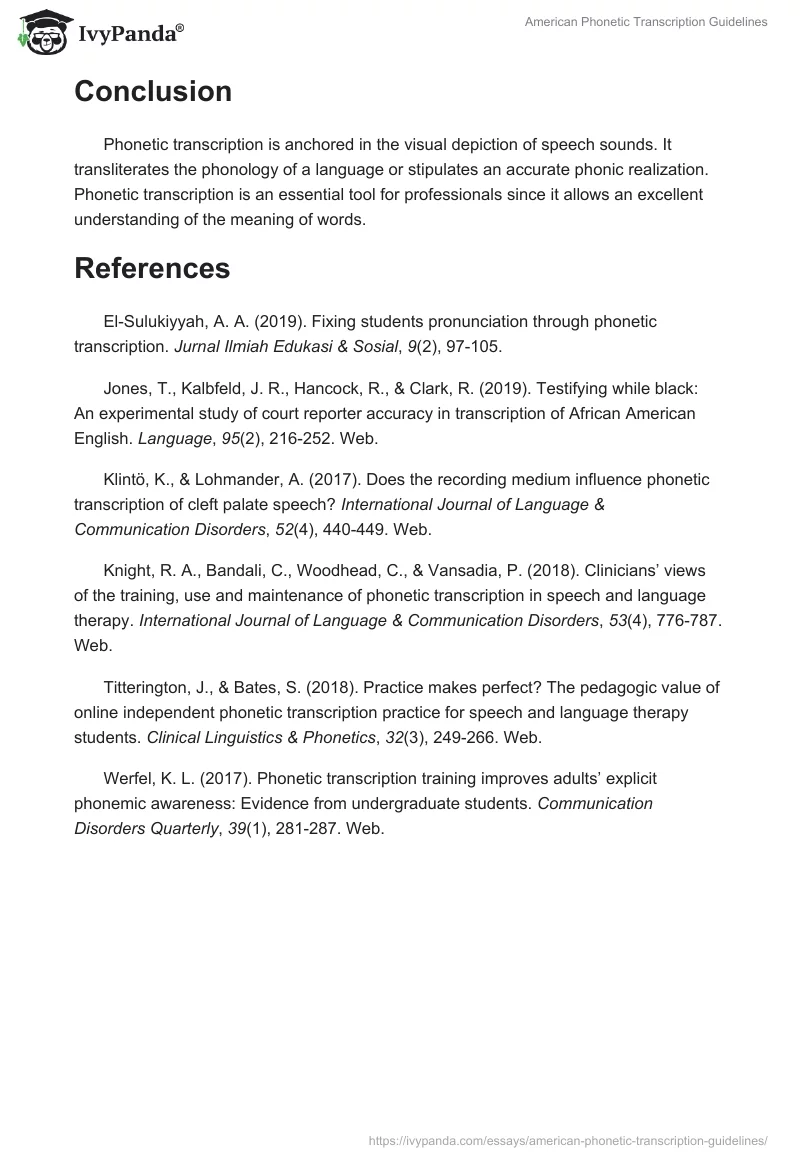Phonetic transcription is based on the visual representation of speech sounds (phonemes and phones). The most common forms of phonetic transcriptions employ phonetic alphabets (Titterington & Bates, 2018). Phonetic transcription transcribes the phonology of a language or goes further to stipulate the precise phonic understanding.
Indispensable Tool for Professionals
Phonetic transcription is an indispensable tool for professionals since it provides meaning that is impossible in orthography. While some languages in orthography, such as English, are usually irregular and make it hard to differentiate pronunciation from spelling, phonetic transcription presents a direct connection between sounds and symbols (Klintö & Lohmander, 2017; Werfel, 2017). It also articulates distinctions in pronunciation between dialects in a language and recognizes variations that may occur over time.
Guidelines
There are many important guidelines when learning phonetic transcription; they include independence, systematicity, and reliability. Independence entails the capacity to transcribe what is heard and enables rapid identification of troublesome sounds and other concerns (Knight, Bandali, Woodhead, & Vansadia, 2018). Being set free from the need to consult dictionaries and websites for pronunciation allows a person to focus on other important things. Phonetic transcription promotes systematicity, organized attempts that allow excellent spelling of words, since without explicit systems of symbols, such endeavors fail. The reliability guideline enables learners to instantly associate the pronunciation of related and rhyming words with each other (El-Sulukiyyah, 2019; Jones, Kalbfeld, Hancock, & Clark, 2019). If learners can reliably read the transcription, they gain the ability to take note of arising differences.
Conclusion
Phonetic transcription is anchored in the visual depiction of speech sounds. It transliterates the phonology of a language or stipulates an accurate phonic realization. Phonetic transcription is an essential tool for professionals since it allows an excellent understanding of the meaning of words.
References
El-Sulukiyyah, A. A. (2019). Fixing students pronunciation through phonetic transcription. Jurnal Ilmiah Edukasi & Sosial, 9(2), 97-105.
Jones, T., Kalbfeld, J. R., Hancock, R., & Clark, R. (2019). Testifying while black: An experimental study of court reporter accuracy in transcription of African American English. Language, 95(2), 216-252. Web.
Klintö, K., & Lohmander, A. (2017). Does the recording medium influence phonetic transcription of cleft palate speech? International Journal of Language & Communication Disorders, 52(4), 440-449. Web.
Knight, R. A., Bandali, C., Woodhead, C., & Vansadia, P. (2018). Clinicians’ views of the training, use and maintenance of phonetic transcription in speech and language therapy. International Journal of Language & Communication Disorders, 53(4), 776-787. Web.
Titterington, J., & Bates, S. (2018). Practice makes perfect? The pedagogic value of online independent phonetic transcription practice for speech and language therapy students. Clinical Linguistics & Phonetics, 32(3), 249-266. Web.
Werfel, K. L. (2017). Phonetic transcription training improves adults’ explicit phonemic awareness: Evidence from undergraduate students. Communication Disorders Quarterly, 39(1), 281-287. Web.


